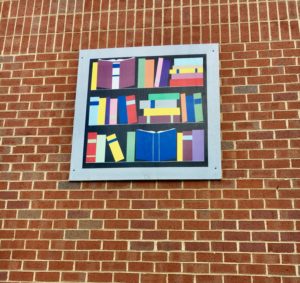Happy National Invasive Species Awareness Week (NISAW), the week we celebrate our native plants and their importance in our landscape. Native plants are the plants that grow naturally in our area. They are best adapted to our local soil and climate conditions and provide the best food and habitat to support native insects and wildlife. By simple definition, invasive plants are an alien or non-native species that show a tendency to spread out of control, often crowding out indigenous plants that feed and shelter the animals we love. Once “introduced” into the native landscape, invasive species displace native plants that are the foundation for the food webs that sustain life. In fact, invasive species have directly contributed to the decline 42% of the threatened and endangered species in the United States.” According to the Nature Conservancy, a global environmental organization.
Many of the native plant species in our area are currently under attack from invasive species of plants that in many cases have been introduced into the ecosystem by unsuspecting homeowners who unknowingly chose invasive plants for their landscaping. Many of the worst invasive plants in Virginia are sold at nurseries, box stores, and your local garden centers, promoted for their showy beauty, fast growth, or bird or butterfly-attracting attributes. They may be easy to grow or pretty to look at, but they escape from their garden settings, multiply, and take over in places where they were never meant to be. Even if you put an invasive plant in a container, the seed heads can be easily dispersed by wind or birds.
Farmcolony has had its share of run-ins with invasive plants on the farm, a battle we are constantly fighting in our fields against such undesirables as Perilla and Hemp dogbane.Ann and Bill turned our attention to the problem of invasive plants on the farm when they organized a Perilla Pulling Party to rally the community to pull up the toxic weed that was overtaking an area of the farm just below the burn pile. Perilla is a toxic weed that can create respiratory problems in cattle, goats, horses and other ruminants that consume the plant while grazing, not something you want in the hay you are feeding your animals, but something we still see in small patches around the farm.
The farm also has had to fight back an invasion of Hemp Dogbane in our fields, especially field H3. Hemp Dogbane is a very invasive herb in the milkweed family considered highly toxic to humans and livestock. Oriental bittersweet, first introduced to the U.S. from Asia in the 1860’s as an ornamental garden plant, is spreading profusely near the cul-de-sac on Colony Drive. Scattering its seeds far and wide, this invasive vine climbs high into the trees strangling and toppling anything in its path, and smothering underlying shrubs, wildflowers and future tree generations on the ground.
Alanthus, also known as the Tree of Heaven, is sprouting up around the farm, especially in the freshly disturbed areas along our roadways. Alanthus is a problem because it reproduces very quickly and aggressively inhibits (and can even kill) native plants near it. This invasive plant produces an overly abundant amount of seeds, crowds out native species with its dense thickets and secretes a chemical into the soil that is toxic to surrounding plants.
Recently, a group on the farm came together to remove numerous sprouts of Bradford Pear that were beginning to crowd our beloved ash tree located behind the memorial bench on Colony Drive, a tree the farm is currently treating to protect against the invasive Emerald Ash Borer. Yes, invasives can apply to insects as well. We all know too well the invasive stink bug.
Unfortunately, at many stores, plants are not labeled as invasive or as native to our area. This means it is up to you to do your research. According to Blue Ridge PRISM (Partnership for Regional Invasive Species Management), a volunteer-driven organization dedicated to reducing the negative impact of nonnative invasive plants in the Blue Ridge area of Virginia, you can begin by being wary of any nonnative garden plant that is:
- Weedy within your garden – it can escape to natural areas
- Supposed to attract birds with showy berries – birds will spread it outside your property
- Advertised as easy to “naturalize” – that word really means it can be weedy and escape
- Included in a “meadow garden” mix – such plants may be prolific seeders and will escape, and even if native, are often sourced in meadows and grasslands in the midwest, and are not native to our region or your county.
- Contained in a “wildflower” mix – these plants are rarely native wildflowers and can harm the environment
- Touted as good for erosion control – translate this to mean it spreads aggressively by its roots
When planning your landscaping, look for native alternatives to commonly sold invasive plants. Fortunately, there are some gorgeous native alternatives that are easy to find, if you know where to look. Here are some resources to help you get started.
RESOURCES
It is impossible to list every native alternative for the invasive plants in this guide. To get started visit Plant Virginia Natives . https://www.plantvirginianatives.org/
Look for regional guides such as Piedmont Native Plants – A Guide for Landscapes and Gardens https://mcusercontent.com/14f106d040bc4a19e9b83a704/files/4330a079-6d7d-42b8-9d67-25c9a5d47b95/Piedmont_Native_Plant_Guide_April_2016.pdf
Other resources:
USFS Native Plant Alternatives – a list of invasive plants and native alternatives for the mid-Atlantic region
https://www.fs.fed.us/wildflowers/Native_Plant_Materials/Native_Gardening/alternatives.shtml
HomeGrown National Park -A Grassroots Call-To-Action to Restore Biodiversity https://homegrownnationalpark.org/get-started
For a more detailed list from Blue Ridge PRISM of commonly-sold invasive plants to avoid planting in your home landscape, see the Garden Escape Artists Fact Sheet.

